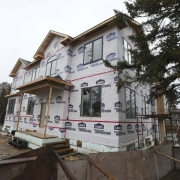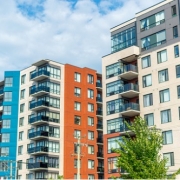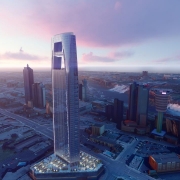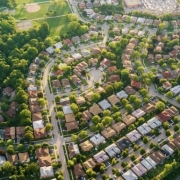The main advantages of buying a pre-construction condo are that you usually get a better price when you buy at the beginning, and you get to choose to some extent the finishes that your unit will have. For some, there’s the added kick of knowing that no one else has ever lived in their home before. But if you can’t handle the fact that when you buy a pre-construction condo you will have to wait three or four years before you actually move in, you should buy something else.
How certain can you be about the time you’ll have to wait until your condo is complete, and how are you protected against delays in construction? The fact that delays happen is not exactly an industry secret, and to a certain extent, developers are in a bind themselves. George Carras, the head of one of the main real estate industry research firms, RealNet Canada, said recently that labour shortages in Toronto are making it increasingly difficult to build the huge number of new condos on time. According to Carras, the most that builders can produce with present resources is 15,000 new units a year. But there are currently 55,000 units under construction, and 32,000 more in pre-construction.
There are plenty of other reasons for delays in condo construction—the tighter credit market available to developers, the massive size of some developments, the staging problems of building large buildings in a confined space in the downtown core—but developers are expected to deal with these problems. The best advice to anyone considering purchasing a condo is to check into the developer’s track record before you commit. A good source of information about new home warranties in general, and condominiums in particular, is Tarion.
You the condo buyer, are quite well protected in Ontario by the Tarion warranty corporation. When you purchase a pre-construction condominium, the builder is required to attach a document called the Tarion Addendum. It contains a Statement of Critical Dates, with the date when the builder expects the condominium to be completed clearly stated. This is obviously important and is one reason many experts recommend that you have either a realtor or a lawyer with you when you sign a purchase agreement.
The Statement of Critical Dates allows the builder a fair amount of wiggle room, and every purchaser needs to be aware of this. The key date here is the Outside Occupancy Date: the builder cannot extend occupancy beyond this date without paying you compensation.
But before you reach that Outside Occupancy Date, you will go through a First Tentative Occupancy Date. As the name suggests, it could be the first of several, and it is “tentative,” representing a target date. In each case of an extended occupancy date by the builder, you must be informed in writing 90 days beforehand.
If the first (or other) tentative occupancy date can’t be met, the builder must set a Final Tentative Occupancy Date, within 30 days of the completion of the building’s roof. If that date can’t be met, the builder must give you 90 days’ written notice to set one more deadline: the Firm Occupancy Date. This is the last occupancy date the builder can set and it can’t be later than the Outside Occupancy Date you both signed off on at the beginning. If the condo isn’t ready by the Outside Occupancy Date, you have thirty days to terminate the agreement if you wish. The Outside Occupancy Date may be as late as 365 days after the Firm Occupancy Date.
A fairly high-profile legal action is now underway in the courts of British Columbia, arising, according to newspaper reports, from a condo developer’s alleged failure to inform purchasers of a delay in construction. One of those purchasers was Kim Campbell, former prime minister of Canada. She and the other purchasers in the upscale building are suing the developer, who delayed completion of the building by more than a year, without, allegedly, informing anyone. Campbell is reported to have signed the purchase agreement in October 2007, with an occupancy date of December 2011. The building was not completed until January 2013.
Builders too are protected, against delays that are considered unavoidable, such as would occur if construction workers were to go on strike, or some kind of disaster caused extensive damage. And there is also a provision that allows the builder to negotiate an extended occupancy date by mutual consent.








 Maziar Moini, Broker of Record - Home Leader Realty Inc.
300 Richmond St. W., #300, Toronto, ON M5V-1X2
Maziar Moini, Broker of Record - Home Leader Realty Inc.
300 Richmond St. W., #300, Toronto, ON M5V-1X2


